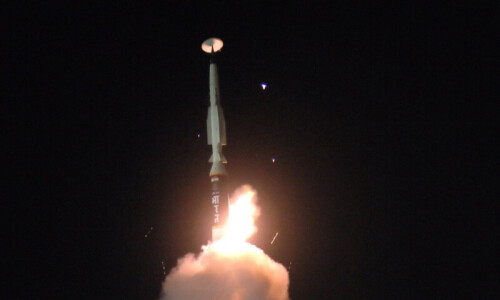
Brought out by Geetika Publishers with support from the Indian foreign ministry, the documents (1947-2007) are a definitive collection that could be used by historians, scholars and journalists to look closely at the twists and turns in India-Pakistan relations.
Mr. Bhasin, who retired from the Ministry of External Affairs as Director (Historical Division) after nearly three decades of service in 1993, has been quietly engaged in bringing hidden documents on a range of issues to public notice.
One usually depends on newspaper reports for accounts of meetings, but here many texts, records of meetings, letters and other documents have been made available in full.
There’s a lot to read and I haven’t even begun in earnest, but one document in the first volume immediately grabbed my attention.
It’s the “joint press code” adopted by the All-India Newspaper Editors’ Conference and the Pakistan Newspaper Editors’ Conference at its fourth meeting held on June 24-25, 1950.
The (India-Pakistan) Joint Press Committee “calls upon the Press of both countries to help to facilitate the further implementation of the Indo-Pakistan [Press] Agreement [of 1948]:-
(a) By avoiding the dissemination of news calculated to undermine relations between the majority and minority communities in the two countries
(b) By refusing to give currency to mischievous opinion of individuals or organizations likely to rouse communal passions or create a sense of insecurity among the members of the minority community;
(c) By rigorously excluding from the Press of each country opinion directed against the territorial sovereignty of the other or purporting to incite war;
(d) By seeking through normal Press channels or Government Agencies verification of news or communal incidents before it is published.
(e) By always exercising due care and caution in regard to the publication of reports of communal incidents;
(f) By avoiding alarming headlines for reports of communal incidents;
(g) By exercising care in the publication of pictures and cartoons likely to excite communal passions;
(h) By affording full facilities to Governments for correction or contradiction of published reports.
The joint press code of 1950 was, clearly, enacted to ensure the post-Partition protection of minorities in India and Pakistan and to ensure that war-mongering in the media was reduced.
It’s an eminently sensible document designed to reduce media temperatures but, like so many other agreements between India and Pakistan, observed only in the breach.
Clearly, this agreement was never implemented or observed by the press in either India or Pakistan. The worst kinds of propaganda and “mischievous opinions” of individuals were given currency by the large majority of the media organisations both in print and radio in the early years after 1947.
Given the verbal volley-after-volley or the statement-rebuttal-statement policy style adopted by the politicians of India and Pakistan after independence, the press was also used as a tool to bolster competing, fragile national egos.
If for one moment we hold that the 1950 joint press code still remains valid, where would this leave the India-Pakistan media, with television, web and social media platforms added on, today?
To my mind, the record is a miserable one.
With a few honourable exceptions, the new TV-web world suffers from the same issues that the print-radio world did. In fact, television has definitely made it worse.
Our minds should just wander to what Indian television channels did after the decapitation of an Indian soldier some weeks ago. The anchors frothed at the mouth and shouted for revenge. There was no analysis or context – that such incidents – howsoever horrific – had happened before.
The fact that there are two Indian correspondents in Islamabad (The Hindu and Press Trust of India) and no Pakistani correspondent in New Delhi is commentary enough on the state of country-to-country “press relations”.
Many Indian journalists, for instance, talk to or quote the worst right-wingers in Pakistan. Similar is the case with most Pakistani commentators, who are brought on from Islamabad. Often, they are the biggest and known India-haters.
One can’t expect much change, but journalists of the day should spend a few minutes reading this joint press code.
It’s instructive. And places in sharp contest what we haven’t been doing.

The views expressed by this blogger and in the following reader comments do not necessarily reflect the views and policies of the Dawn Media Group.











































